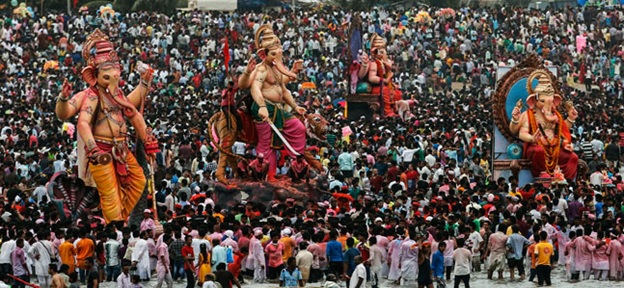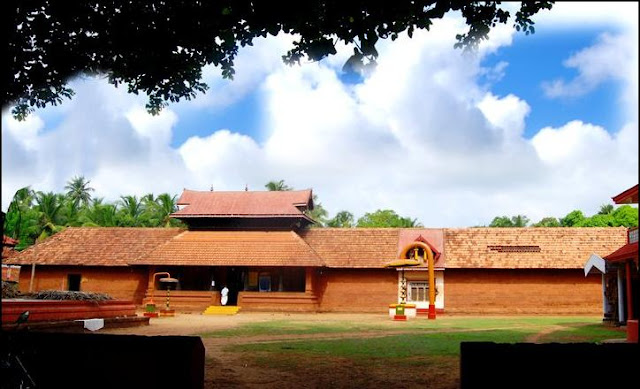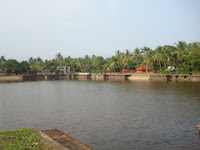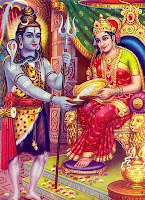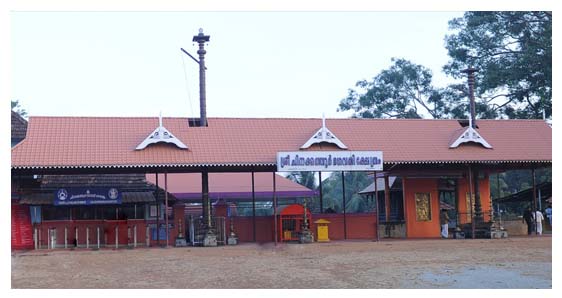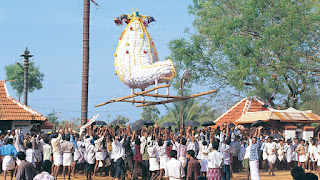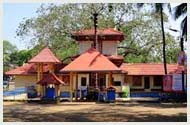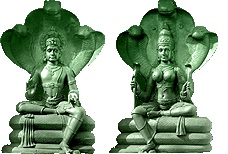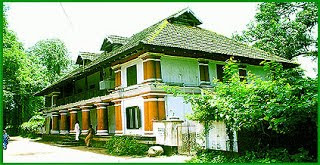Ganesh Chathurthi greetings to all from Devaayanam!
The festival to invoke the divine Lord Ganesh, the darling of masses, and seek his blessings for prosperity and well-being has arrived again.
This year the
Vinayaka chathurthi falls on 5th September 2016. As per hindu panchang, the
Ganesh Staphna (installation of the Idol) on Ganesh Chaturthi day this year,
can be done at Amrit time between 06:28 AM to 08:00 AM or Shubh Time
i.e.between 09:32 AM to 11:05 AM. Ganesh Pooja is preferred during Madhyanhana
on Ganesh Chaturthi as it is believed that Lord Ganesh was born during
Madhyahana Kaal which is between 14:09 and 15:42. The time specified above is
the best Muhurth to perform the Ganesh Puja.
Ganesh
Chaturthi is a ten-day festival
celebrated to honour the elephant-headed God Ganesh's birthday.The festival
begins on Shukla Chaturthi which is the fourth day of the waxing moon period,
and ends on the 14th day of the waxing moon period known as Anant
Chaturdashi.Ganesh Chaturthi is celebrated with great devotion all over India.
People bring home murtis (Idols) of Lord Ganesh and celebrate the festival by
worshiping the Lord in a special way for a day and a half, 3 days, 5 days, 7
days or 11 days depending on the family tradition and commitment of each
individual.On the last day of worship the idol is taken out in a colourful and
musical procession to be immersed traditionally in a waterbody.The festival is
celebrated by families at home, by people at their places of work and in
public. The public celebration involves installing clay images of Ganesh in
public pandals (temporary shrines) and group worship.
Legend of Ganesh:
Worshipped
foremost among all the Gods, Lord Ganesh is known as the god of wisdom,
knowledge and peace.Ganesh is known by 108 different names and is honoured at
the start of rituals and ceremonies as he'sconsidered the God of beginnings.
He's widely and dearly referred to as Ganapati or Vinayaka.The son of Shiva and
Parvati, Ganesh has an elephantine countenance with a curved trunk and big
ears, and a huge pot-bellied body of a human being.
The story of
the birth of this deity, as depicted in the Shiva Purana, goes like this: Once
goddess Parvati, while bathing, created a boy out of the dirt of her body and
assigned him the task of guarding the entrance to her bathroom. When Shiva, her
husband returned, he was surprised to find a stranger denying him access, and
struck off the boy's head in rage. Parvati broke down in utter grief and to
soothe her, Shiva sent out his squad to fetch the head of any sleeping being
who was facing the north. The company found a sleeping elephant and brought
back its severed head, which was then attached to the body of the boy. Shiva
restored its life and made him the leader (pati) of his troops. Hence his name
'Ganapati'. Shiva also bestowed a boon that people would worship him and invoke
his name before undertaking any venture.
However,
there's another less popular story of his origin, found in the Brahma Vaivarta
Purana: Shiva asked Parvati to observe the punyaka vrata for a year to appease
Vishnu in order to have a son. When a son was born to her, all the gods
assembled to rejoice on its birth. Lord Shani, the son of Surya (Sun-God), was
also present but he refused to look at the infant. Perturbed at this behaviour,
Parvati asked him the reason, and Shani replied that his looking at baby would
harm the newborn. However, on Parvati's insistence when Shani eyed the baby,
the child's head was severed instantly. All the gods started to bemoan,
whereupon Vishnu hurried to the bank of river Pushpabhadra and brought back the
head of a young elephant, and joined it to the baby's body, thus reviving it.
The Grand Way
of Celebration:
A life-like
clay model of Lord Ganesh is made 2-3 months prior to the day of Ganesh
Chaturthi. The size of this idol may vary from 3/4th of an inch to over 25
feet.
On the day of
the festival, it is placed on raised platforms in homes or in elaborately
decorated outdoor tents for people to view and pay their homage. The priest,
usually clad in red silk dhoti and shawl, then invokes life into the idol
amidst the chanting of mantras.This ritual is called 'pranapratishhtha'. After
this the 'shhodashopachara' (16 ways of paying tribute) follows. Coconut,
jaggery, 21 'modakas' (rice flour preparation), 21 'durva' (trefoil) blades and
red flowers are offered. The idol is anointed with red unguent or sandal paste
(rakta chandan). Throughout the ceremony, Vedic hymns from the Rig Veda and
Ganapati Atharva Shirsha Upanishad, and Ganesh stotra from the Narada Purana
are chanted.
For 10 days,
from Bhadrapad Shudh Chaturthi to the Ananta Chaturdashi, Ganesh is worshipped.
On the 11th day, the image is taken through the streets in a procession
accompanied with dancing, singing, to be immersed in a river or the sea
symbolizing a ritual see-off of the Lord in his journey towards his abode in
Kailash while taking away with him the misfortunes of all man.
Mass join this
final procession chanting "Ganapathi Bappa Morya, Purchya Varshi
Laukariya" (O father Ganesh, come again early next year). After the final
offering of coconuts, flowers and camphor is made, people carry the idol to the
river to immerse it.The whole community comes to worship Ganesh in beautifully
done tents.
Observation Of Fast
and Puja On Ganesh Chaturthi:
Observers of
this fast should take bath early in the morning along with completion of their
daily chores. Resolution is then taken before observing the fast by taking
water and darbha grass in hand and chanting the mantra "Mam
Sarvakarmsiddhaye Siddhivinayak Pujanmaham Karishye". Idol of Lord Ganesh
made up of gold, copper or mud is worshipped. A pot is taken and is filled with
water, and after tying the mouth of the pot with a clean cloth, the idol of
Ganapati is placed over it. Then, to worship the idol a 16-fold procedure is
followed: Aavaahana, Aasana, Paadya, Arghya, Aachamana, Madhuparka, Snaana,
Vastra, Gandha, Pushpa, Dhoopa, Deepa, Naivedya, Taamblooa, Aarati, and
Mantrapushpa.
o Aasana means offering our guest the seat. This is called as Aasana Samarpana.
o Paadya is to wash the feet of the idol of Lord Ganesh.
o Arghya means to wash off the hands.
o Aachamana is about taking three gulps of water to smoothen the speech faculty.
o Madhuparka means offering to the idol of Lord Ganesh something to drink.
o Snaana means bathing the idol with milk, curd or ghee.
o Vastra or Upaveeta is about offering new clothes to the idol of Lord Ganesh.
o Gandha is application of sandalwood paste on the forehead as per tradition.
o Pushpa means to offer flowers to the Lord Ganesh.
o Dhoopa means fragrant smoke by burning of herbs, considered good for health.
o Deepa means light. It's about acknowledging Lord Ganesh in the form of light.
o Naivedya is a practice of offering different varieties of dishes to Lord Ganesh.
o Taamblooa is the chewing of betel leaf with other herbs, considered to be good for health.
o Aarati means showing a big flame of camphor lit diya to Lord Ganesh.
o Mantrapushpa is about chanting the mantras and going round (pradakshina) to imply that deity is present in every direction.
After this
16-step puja, Aarti is sung and then prasad is distributed.
The fast of
Ganesh Chaturthi is kept from the time of sunrise to moonrise. This fast comes
to an end after watching of the Moon followed by the Aarti (song sung in praise
of the deity) of Lord Ganesh. Those who keep fast on this auspicious day are
showered with bliss and wisdom by the lord Ganesh.
Naivedya prasad
for Ganesh chathurthi:
On Vinayaka
Chathurthi day and the throughout the 10 days of festival, different prasads
are offered to appease the great appetite of Lord Ganesh. In South India,
Modakam or Vella kozhukkattai with jaggery and coconut filling, laddoos, uppu
kozhukkattai , various sundals with lentils,appam,adai and Payasams are offered
to the deity. To get acquainted with Vinayaka Chathurthi special preparations
visit the links:
History of Mass
Ganesh Chathurthi Celebration:
Although it is
unknown when (or how) Ganesh Chaturthi was first observed, the festival has
been publicly celebrated in Pune since the era of Shivaji (1630–1680, founder
of the Maratha Empire).The Peshwas (hereditary administrators of the empire
from 1718 until its end in 1818) encouraged the celebrations in their capital,
Pune, since Ganesh was their family god (Kuladevata) With the fall of the
Peshwas, the Ganesh festival lost state patronage and became a private family
celebration in Maharashtra until its revival by Indian freedom fighter and
social reformer Lokmanya Tilak.Tilak recognized Ganesh's appeal as "the
god for everybody",popularising Ganesh Chaturthi as a national festival to
"bridge the gap between Brahmins and 'non-Brahmins' and find a context in
which to build a new
grassroots unity between them, generating nationalistic fervour in the
Maharashtran people to oppose British colonial rule. He was the first to
install large public images of Ganesh
in pavilions, and established the practise of submerging the idols in rivers,
the sea or other bodies of water on the tenth day of the festival.
Encouraged by
Tilak, Ganesh Chaturthi facilitated community participation and involvement in
the forms of intellectual discourse, poetry recitals, plays, concerts, and folk
dances. It was a meeting ground for people from all castes and communities at a
time when the British discouraged social and political gatherings to control
the population.


